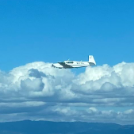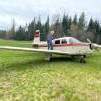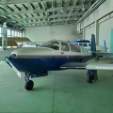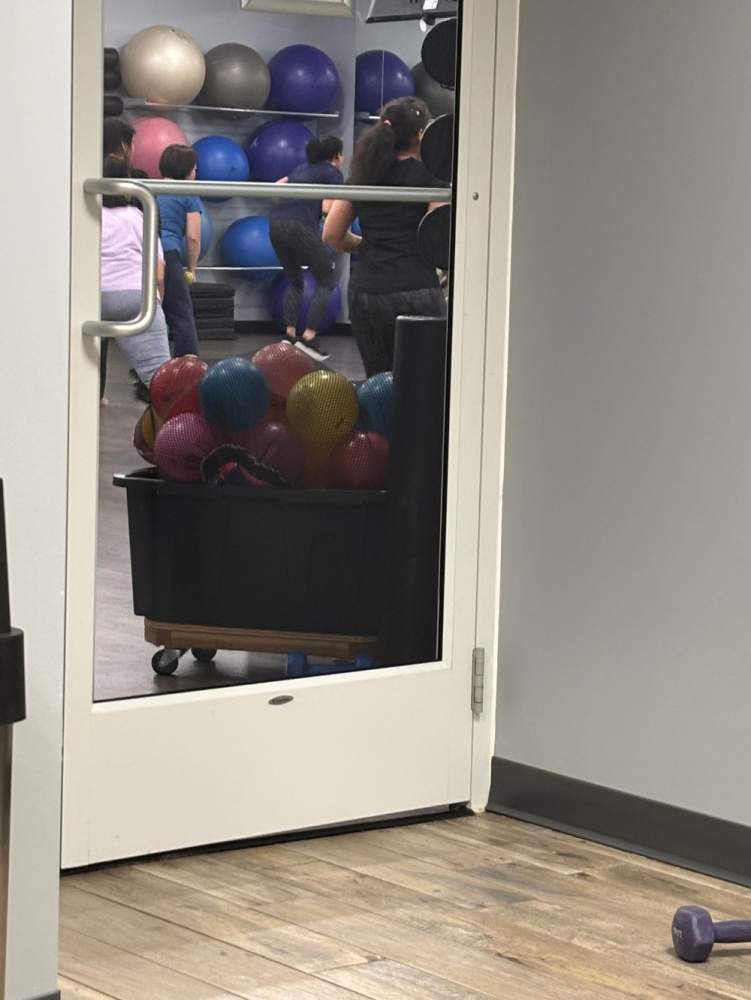-
Posts
45,298 -
Joined
-
Last visited
-
Days Won
381
carusoam last won the day on March 27 2024
carusoam had the most liked content!
About carusoam
Profile Information
-
Gender
Not Telling
-
Location
NJ
-
Reg #
N...57M
-
Model
Ovation 1
Recent Profile Visitors
36,634 profile views
carusoam's Achievements
-
Long body ownership… lasting into retirement! Welcome to the second half!!! Best regards, -a-
-
hey dkk! That’s pretty funny..! the longer the threads… the more fun the summary became. for about a decade and a half, I was able to read every post ever written… welcoming each member, as they came aboard… it was a fun way to learn, or check old memories… to see what I forgot, or didn’t quite learn the right way… the best parts… meeting thousands of MSers on line… then running into them in real life, at various fly ins… helping so many people find an answer to a challenge they were having… or a service they were looking for… I happened upon MS… in the early days. I had just sold my M20C, and was starting the search for the next Mooney… in some places… I left cryptic markers. To help remember people… and find them again… if you can’t remember Cody as the person to answer questions about Mooney propellers… do a search on prop guy… and see how often he shows up… Or search welcome aboard and your screen name… see if you can find your own first post! keep in mind… MS had a weak search function at first. Finding a three letter word like ‘guy’ was a bit challenging… running a google search from outside MS has always worked better… hmmmmm… imagine being replaced by AI. my post count grew by thousands every year… We would celebrate the post count at each 10K milestone… hoping to make that post a memorable one… I always look forward to the next post… some posts are more fun than others… inviting various people to a thread… using the important @ symbol in front of their screen name… it’s been about 18 years or so since this all began… next stop… post number 50k. it’s been a fun flight! Best regards, -a-
-
Hey Everybody! Why TnGs can be taboo… memory limitations, distraction, cognitive overload… allows the pilot more opportunity to make a GU mistake… insurance costs spread across the Mooney community always gets a response (true or not). Solutions… always use a checklist, Gumps. More than once. or do the full stop landing. landing reviews… final judgement comes with… how briefly the stall horn peeps just prior to the mains touching. how close to the centerline the nose wheel actually touches down… the time that elapsed between the nose and main gear touching… more than a microsecond is good… Solution for improvement… landing by the numbers. See @donkaye, MCFI’s final approach speed chart for ideas… go around practice is important for Mooneys… because basic training in low power trainers can be really bad for a go around in any Mooney… the Why… Full flaps and low power, moves the center of lift really far back… trim gets set very nose up to compensate… during the go around… using the power should come with a fair amount of experience… more than one pilot has met their demise using full power and full up trim during a go around… the nose wants to point skywards, using a lot of arm strength to avoid a stall… and it is slow to get the trim reduced… manual and electric. Non-towered fields… it helps to know your partners in the traffic pattern… Students and low time pilots have difficulty with situational awareness… they don’t always know where they are, and knowing where a plane on a straight in is going to show up…. Can be asking too much for their skills… they may answer that they are capable on the radio, to find out, they made a simple mis-judgement… one other taboo related to landing… are stalls in Mooneys… Solution… keeping the ball centered is everything. a mis-rigged Mooney can try to be surprising in a stall… flying X-country probably won’t give natural practice in stalls, slow flight, or go arounds… but, they are fun to practice… PP thoughts only, not a cfi… Best regards, -a-
-

Custom Aircraft - exhaust repair and fabricating
carusoam replied to FlyDave's topic in General Mooney Talk
A note on flame tubes inside the muffler… they work as flow distributors… they keep the hot parts of the exhaust stream from impinging on the outer wall… when the hot gasses get misdirected… they start to cut their way through the heater muff… this is how heater muffs start allowing CO into the cabin… it takes a lot of things to go wrong… before CO becomes a problem… but, once things start going wrong… 100LL flame temperature is much higher than the softening point of stainless steel… keep your exhaust flow organized…! Best regards, -a- -

Custom Aircraft - exhaust repair and fabricating
carusoam replied to FlyDave's topic in General Mooney Talk
@PeytonM expect the wear on the hot parts of the exhaust system to be related to how hot the parts get… a fancy way to start the LOP vs ROP discussion… ROP will be sending flames past the exhaust valves… LOP most of the fuel burn is completed before it exits the cylinder… Roughly speaking… a visual inspection of the exhaust tube leaving the cylinder… may give a hint to how hot it has been getting… the tubes start life as smooth surfaced tubes… once heated and cooled a few thousand flights… the surfaces take on a more rough and grainy (?) appearance… hard to describe… but, when measuring thickness… you can probably find that some metal has been moving with the cycles… These parts CAN get red hot… which is about where they lose a lot of their typical strength. by comparison… a TC’d exhaust system takes a thermal beating compared to an LOP’d NA exhaust system… you might just get lucky! PP thoughts only, not a mechanic… best regards, -a- -
Late to the party… I do have O360 gov experience… ours are all very similar, unless you fly a Rocket engineered machine… where the failure mode goes full coarse pitch… for best glide distance… our govs are a few sub systems in one… 1) they have their own gear pump to supply pressure to adjust the pitch…. No way to measure the actual oil pressure within the prop during flight… 2) control valve… the thing that actually controls the oil pressure in the prop… 3) fly weights… the spinning device that activates (opens more and closes more) the control valve based on the speed of rotation of the fly weights… 4) the control knob that sets the fly weights… 1600 hours is not a lot of time to wear out this system… a certain amount of oil pressure needs to be supplied to the gov to allow it to work… gear pumps are pretty robust and can handle a lot of air bubbles if necessary… my old challenge… the O360 has a hollow shaft with a plug at the cabin end… if this seal fails, the gov is unable to build the necessary pressure to adjust the prop… the fifty cent seal only costs a few amus to replace… prop comes off, faulty seal gets pulled out, new seal pressed in place… prop goes back on… lots of sludge collects in the prop… the oil slowly circulates, but not enough to flush the system… lots of mechanical moving parts inside, fly weights are on a greased path… control valve too, so any dirt inside can keep them from moving correctly… consider what is happening based on the data… fly weights sticking, control valve sticking, or oil pressures fluctuating… PP thoughts only, not a mechanic… best regards, -a-
-
Ross, in our NA world…. We get dense air while at 90%bhp… Our TC’d brethren can get lots of power up where the air is too thin to provide adequate cooling… done well, a tc’d engine can use a set of cylinders around the halfway point to MOH… not done well… the first TOH is before the half way point… the intake systems of the six cylinder Continental engines are nicely designed to easily run LOP… Best regards, -a-
-
All Mooney’s have two methods of operation… 1) keep the cylinders cool to get as close to 2k hrs as possible… 2) keep the TIT cool to keep the vanes from elongating into the turbo’s case… 3) Some use LOP for this… then there is full on flaming dragon mode… find the threads about operating the 231’s engine… find @jlunseth’s writing…. Best regards, -a-
-
sometimes it occurs at 7pm… Zumba! it even sounds fun… mothers and 20yr old daughters working together… with a few daring old guys mixed in. lots of family activity going on around here… remember to stay in your lane… the kids can run 6 minute miles… the dads have heart attacks chasing 7 minute miles… nothing gets in the way of your flying like a good myocardial infarction..! PP thoughts only, no medical background… best regards, -a-
-
+1 for following the guidance you are given… +1 for asking prior to doing something different… it can be un-fun at times… keep it up… you can get to where you want to be… for anyone that has crunchiness in their joints… this can be helpful as well… Still not therapist… Best regards, -a-
-
If for some reason… it feels like it will take 10 years for the full recovery to happen… just know in 10 years you will still be alive flying a Mooney… knowing it IS worth it… Best regards, -a-
-
Done properly… you can get all the joints working silky smoothly… build some muscle nice and evenly… over time… you can win medals in your age group at any 5K you want to enter… like getting the right Mooney cfi… get the right trainer… if you have extra… some time with their dietician is always fun… eat less starch. Drink less beer… and listen to all the conversations going on around you… mostly wacky ideas being discussed by the young guns… a few will discuss politics… and stock markets… Work on muscle memory… getting full motion… and some strength… Come away feeling better, physically and about yourself… PP thoughts only, not a physical therapist…
-
Way cool… I’m not the only one who got trained in how to walk again…. a casual day at the gym… you will find before work hours… lots of working people, in a rush to get through their routine… late morning… is all the blue hairs working all their joints… light weights, lots of reps… afternoons… all the teenagers trying to show how little they know about how muscles work… or how machines work… or how to be nice… afterwork… the crazy busy hours begin… After eight… you have the whole gym to yourself… best regards, -a-
-
Start the post timer… now! Start: 14.5k i hope your @N201MKTurbo recovery goes quickly… less work… more time for MS! best regards, -a-
-
I have seen pics of the stall vane and switch assembly around here before… probably has part numbers of the switch itself included in the discussion… and what was used to clean the switches. having a spark plug hole camera will probably be helpful to determining the best route of action… iirc… it’s a long way from the access panel to the leading edge area… Best regards, -a-














